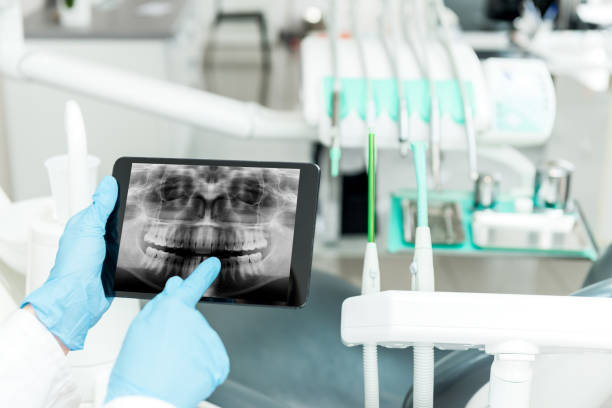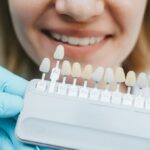In an era marked by rapid technological advancement, dentistry has undergone a remarkable transformation, evolving from traditional practices to a realm of cutting-edge innovation. The integration of technology has revolutionized the way dental professionals diagnose, treat, and enhance oral health. This article delves into the dynamic landscape of dental technology, uncovering how these marvels have reshaped the field and improved patient experiences.
Digital Imaging: A Clearer Insight
One of the cornerstones of modern dentistry is digital imaging, which has replaced traditional X-rays with enhanced clarity and precision. Digital radiography not only reduces radiation exposure but also offers immediate results, allowing dentists to diagnose conditions more accurately and tailor treatments to individual needs. Cone beam computed tomography (CBCT) has elevated imaging further, providing 3D views of the oral and maxillofacial region for advanced diagnosis and treatment planning.
Intraoral Scanning: Bidding Farewell to Impressions
Gone are the days of messy and uncomfortable dental impressions. Intraoral scanning has emerged as a game-changer, capturing detailed digital models of teeth and oral structures. These scans not only improve accuracy but also enhance patient comfort. The digital models serve as the foundation for treatments like crowns, bridges, and aligners, enabling precise customization and efficient production.
Computer-Aided Design and Manufacturing (CAD/CAM): Precision Redefined
CAD/CAM technology has revolutionized restorative dentistry by enabling precise design and fabrication of dental restorations. From crowns to veneers, CAD/CAM systems offer unparalleled accuracy, reducing the margin for error and enhancing overall patient satisfaction. This technology streamlines the process, allowing for faster turnaround times and minimally invasive treatments.
Laser Dentistry: Precision and Comfort
Laser technology has redefined the dental experience, offering minimally invasive alternatives to traditional procedures. Lasers are used for various purposes, from cavity preparation to soft tissue surgeries. Not only do lasers minimize discomfort, but they also promote faster healing and reduce the need for anesthesia.
3D Printing: Shaping the Future of Dentistry
3D printing has ushered in a new era of customization in dentistry. From printing models for treatment planning to fabricating dental prosthetics, this technology offers unmatched versatility and precision. It has significantly shortened production timelines and enhanced the fit and functionality of dental devices.
Artificial Intelligence (AI): Enhancing Diagnostics
The integration of AI in dentistry has led to improved diagnostics and treatment planning. AI algorithms analyze radiographs, scans, and patient data to assist dentists in detecting issues like cavities, gum disease, and even oral cancer at early stages. This advanced analysis enhances diagnostic accuracy and informs more effective treatment strategies.
Robotics in Dentistry: Precision at Its Peak
Robotic technology is making its mark in dentistry, particularly in surgical procedures. Robots can perform highly precise actions with minimal invasiveness, reducing human error and enhancing procedural accuracy. This technology holds immense potential for complex surgeries and treatments.
A Technological Odyssey
The journey of dentistry from conventional practices to the realm of advanced technology is a remarkable odyssey. The marvels of dental technology have not only improved clinical outcomes but also elevated patient experiences. From diagnostic precision to personalized treatments, from virtual consultations to 3D-printed solutions, each technological leap signifies a commitment to excellence and patient-centered care.
As the dental field continues to evolve, one thing remains clear: the synergy of dentistry and technology is rewriting the possibilities for oral health and well-being. With each innovation, dentists are better equipped to provide tailored, efficient, and comfortable treatments, while patients can look forward to a future where oral health is optimized through the wonders of technology.

From Pixels to Pearly Whites: The Evolution of Dental Technology
The evolution of dental technology is a testament to human innovation and the relentless pursuit of improving healthcare. What was once a field defined by conventional practices has now become a realm of cutting-edge advancements that transform the way oral health is diagnosed, treated, and maintained. This article delves into the remarkable journey of dental technology, tracing its evolution from its pixelated origins to its role in achieving flawless pearly whites.
Early Digitalization: Pixels in the Picture
The journey of dental technology began with the early digitalization of dental records and radiographs. The transition from film-based X-rays to digital imaging brought unprecedented clarity and precision to diagnostic practices. Pixels replaced photographs, allowing dentists to magnify and analyze oral structures with enhanced detail. This shift marked the beginning of a digital revolution that would reshape the entire landscape of dentistry.
Digital Impressions: Sculpting Virtually
Traditional dental impressions involved the use of uncomfortable putty materials, often triggering gag reflexes and discomfort. The advent of digital impressions replaced trays and putty with intraoral scanners that capture detailed 3D images of teeth and oral structures. This virtual modeling not only improved accuracy but also eliminated the messiness associated with traditional impressions. The transition from physical molds to digital replicas streamlined treatment planning and opened the doors to precision dentistry.
CAD/CAM Precision: Designing with Algorithms
The marriage of computer-aided design (CAD) and computer-aided manufacturing (CAM) revolutionized restorative dentistry. Dental restorations that once required multiple appointments and manual adjustments can now be designed digitally and fabricated with unprecedented precision. CAD/CAM technology turns complex dental designs into mathematical algorithms, guiding milling machines to craft dental crowns, bridges, and veneers with meticulous accuracy. This integration has redefined not only efficiency but also the quality of dental prosthetics.
Tele dentistry: Crossing Virtual Boundaries
The digital age brought with it the concept of tele dentistry, an innovation that transcends geographical barriers. Through video consultations and virtual appointments, patients can connect with dental professionals for evaluations, advice, and follow-ups. Tele dentistry enhances accessibility, particularly for individuals in remote areas or those with limited mobility. It democratizes oral healthcare, making expert guidance and consultations available at the click of a button.
3D Printing: Sculpting Possibilities
The arrival of 3D printing technology in dentistry introduced a new dimension of customization. Dental laboratories could now fabricate intricate models, aligners, dentures, and even crowns layer by layer. The precision and speed of 3D printing reduced production times and improved the fit of dental devices. This technology transformed the way dental professionals approached treatment planning and allowed for a level of personalization previously unattainable.
Artificial Intelligence (AI) Diagnostics: Intelligent Insights
The inclusion of artificial intelligence (AI) in dentistry has brought about a new era of diagnostics. AI algorithms analyze radiographs, scans, and patient data to assist dentists in identifying issues like cavities, gum disease, and abnormalities. This data-driven analysis enhances diagnostic accuracy and informs more effective treatment strategies. AI-powered diagnostics offer a level of precision and efficiency that goes beyond human capabilities.
Robotics in Dentistry: Precise Procedures
The convergence of robotics and dentistry has led to breakthroughs in surgical precision. Robots equipped with intricate tools and sensors can perform procedures with unparalleled accuracy. This technology has applications in complex surgeries and interventions, where precision is paramount. Robotics in dentistry reduce human error, enhance procedural success rates, and open new doors for minimally invasive approaches.
A Technological Symphony
The journey of dental technology from pixels to pearly whites is a symphony of innovation, creativity, and progress. With each advancement, the field of dentistry evolves, improving patient experiences, expanding treatment options, and optimizing outcomes. From digital impressions to 3D printing, from AI diagnostics to robotic surgeries, the evolution of dental technology reflects a commitment to excellence and a dedication to leveraging technology for the betterment of oral health.

Conclusion
As we stand at the cusp of continued technological evolution, one thing is clear: the relationship between dentistry and technology is symbiotic, shaping a future where pearly whites not only radiate health but also embody the limitless potential of human innovation. The journey from pixels to pearly whites is a testament to our capacity to redefine the boundaries of healthcare and to craft a brighter, healthier, and technologically empowered future.



